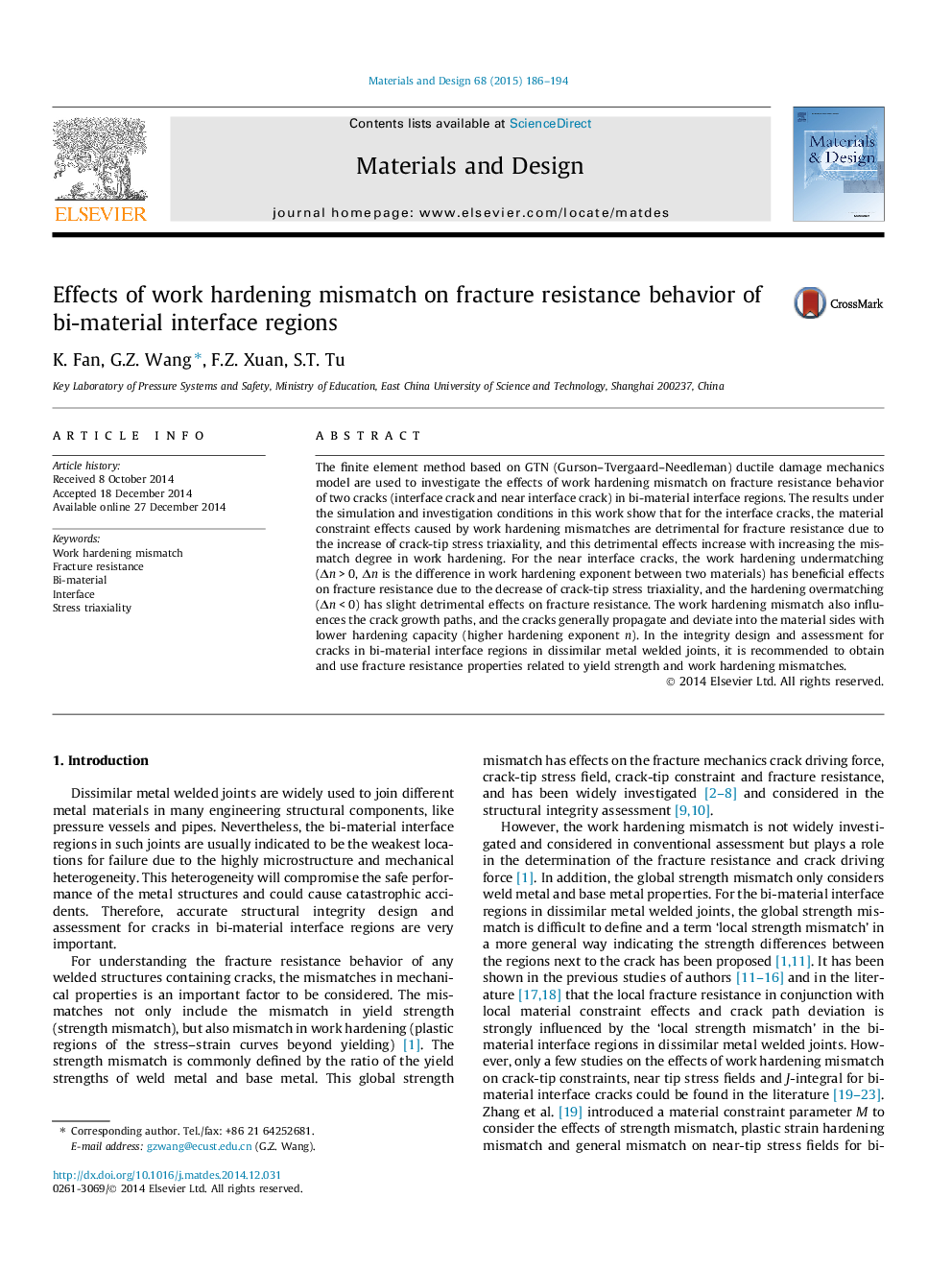| کد مقاله | کد نشریه | سال انتشار | مقاله انگلیسی | نسخه تمام متن |
|---|---|---|---|---|
| 828734 | 1470329 | 2015 | 9 صفحه PDF | دانلود رایگان |
• Effect of hardening mismatch on fracture of bi-material interface regions is studied.
• Hardening mismatch is detrimental for local fracture resistance of interface cracks.
• Hardening undermatching is beneficial for fracture resistance of near interface crack.
• Cracks propagate and deviate into the material sides with lower hardening capacity.
• Local fracture resistance properties related to hardening mismatch should be used.
The finite element method based on GTN (Gurson–Tvergaard–Needleman) ductile damage mechanics model are used to investigate the effects of work hardening mismatch on fracture resistance behavior of two cracks (interface crack and near interface crack) in bi-material interface regions. The results under the simulation and investigation conditions in this work show that for the interface cracks, the material constraint effects caused by work hardening mismatches are detrimental for fracture resistance due to the increase of crack-tip stress triaxiality, and this detrimental effects increase with increasing the mismatch degree in work hardening. For the near interface cracks, the work hardening undermatching (Δn > 0, Δn is the difference in work hardening exponent between two materials) has beneficial effects on fracture resistance due to the decrease of crack-tip stress triaxiality, and the hardening overmatching (Δn < 0) has slight detrimental effects on fracture resistance. The work hardening mismatch also influences the crack growth paths, and the cracks generally propagate and deviate into the material sides with lower hardening capacity (higher hardening exponent n). In the integrity design and assessment for cracks in bi-material interface regions in dissimilar metal welded joints, it is recommended to obtain and use fracture resistance properties related to yield strength and work hardening mismatches.
Journal: Materials & Design - Volume 68, 5 March 2015, Pages 186–194
